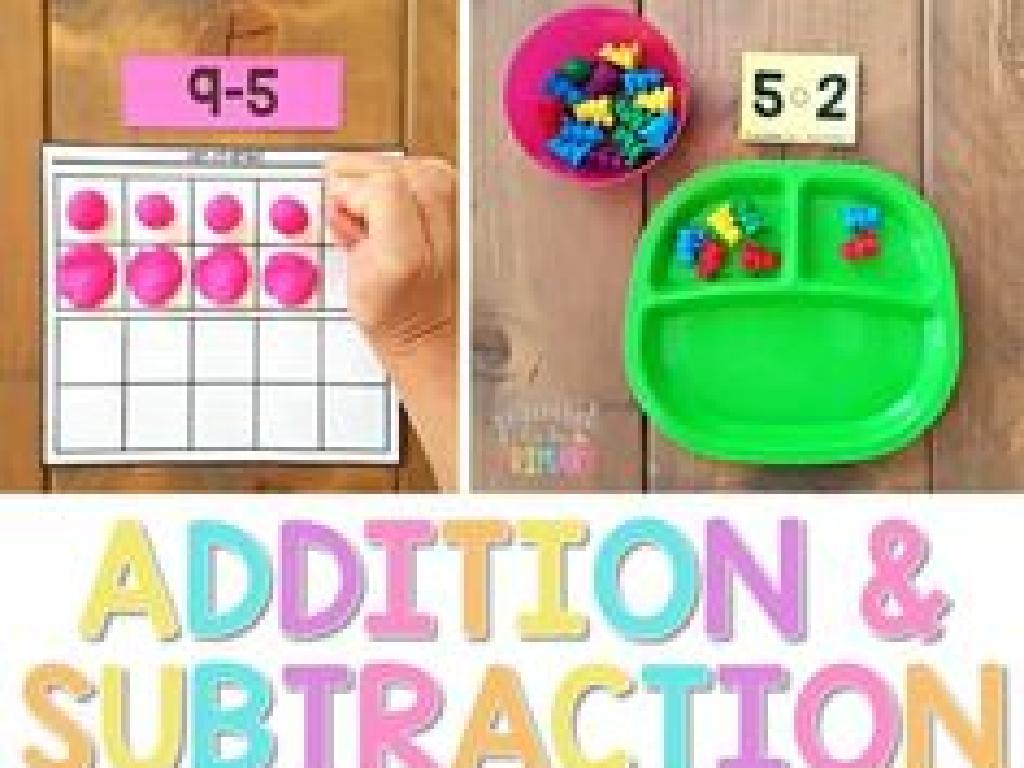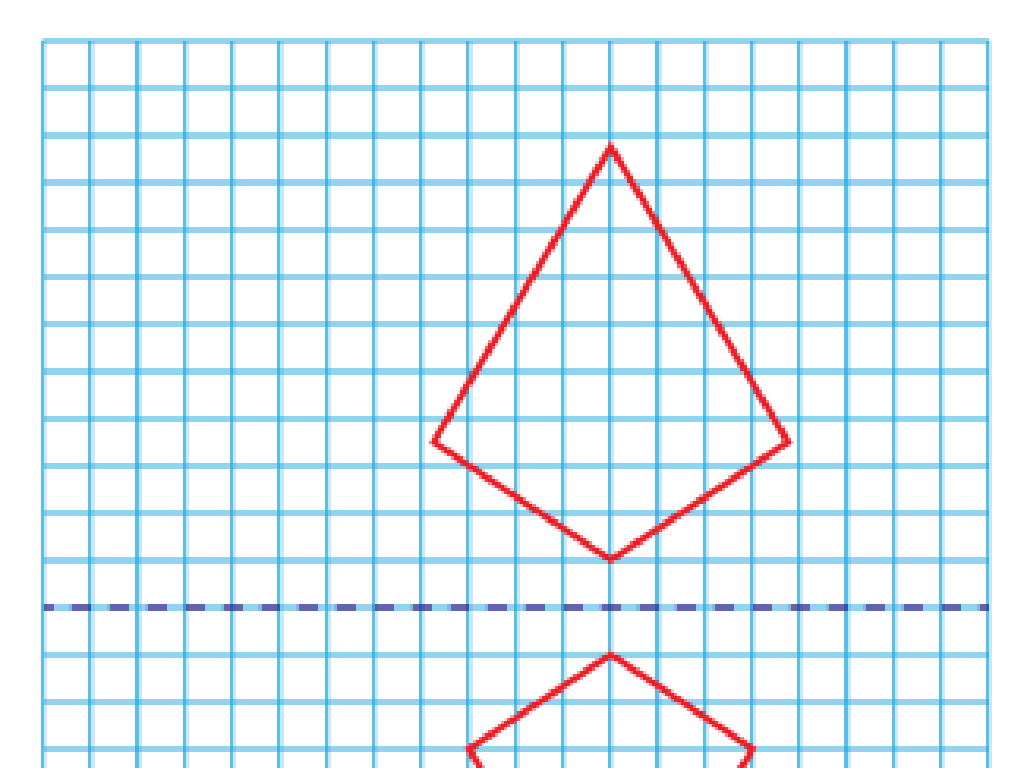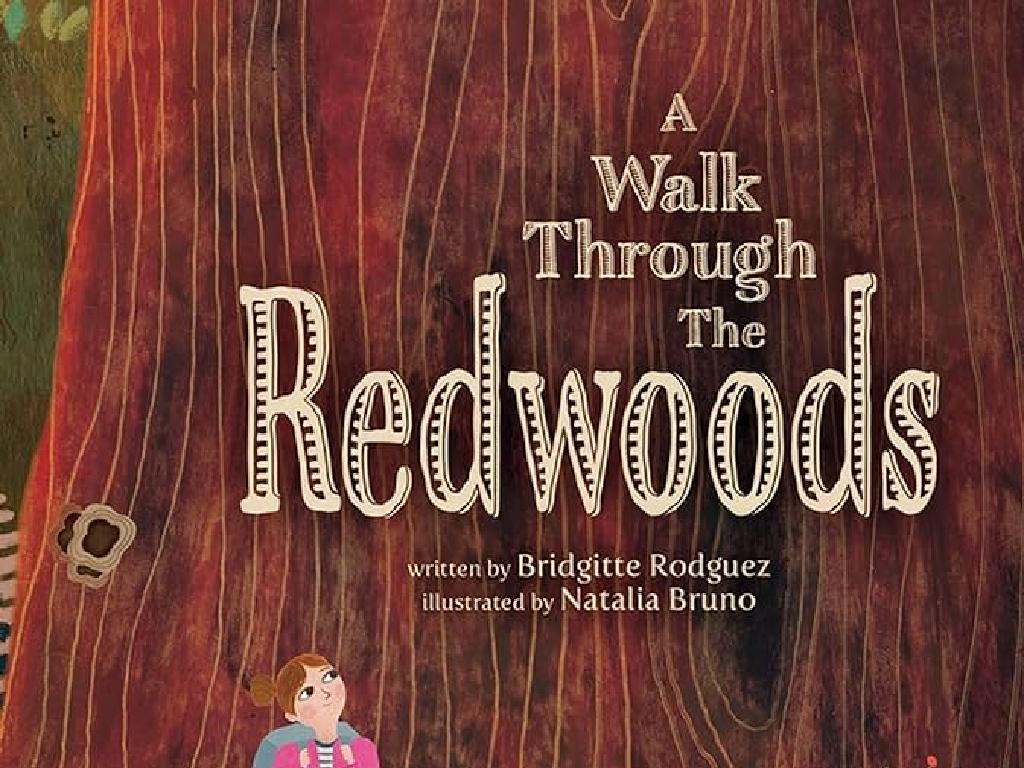Identify Parallelograms
Subject: Math
Grade: Fifth grade
Topic: Quadrilaterals
Please LOG IN to download the presentation. Access is available to registered users only.
View More Content
Today’s Adventure: Identifying Parallelograms!
– Quadrilaterals: Four-sided shapes
– Parallelograms: A special type
– A parallelogram has opposite sides that are both equal and parallel
– Opposite sides are parallel
– Check if both pairs of opposite sides are parallel to each other
– Opposite angles are equal
– Measure or calculate angles to ensure they are equal
|
This slide introduces students to the concept of quadrilaterals, focusing on parallelograms as a specific type within the family of quadrilaterals. Begin by explaining that all quadrilaterals have four sides. Then, describe the unique properties of parallelograms: opposite sides that are equal in length and parallel, and opposite angles that are equal. Use diagrams to illustrate these properties. Encourage students to look for these characteristics in different shapes to identify parallelograms. Provide examples of parallelograms in real life, such as tiles or desks, to make the concept more relatable. The goal is for students to be able to recognize and differentiate parallelograms from other quadrilaterals by the end of the lesson.
Understanding Parallelograms
– Define a parallelogram
– A quadrilateral with both pairs of opposite sides parallel
– Key features of parallelograms
– Important properties that distinguish them
– Opposite sides are parallel
– Each pair of opposite sides are the same length
– Opposite angles are equal
– Each pair of opposite angles are the same size
|
This slide introduces the concept of parallelograms to fifth-grade students. Begin by defining a parallelogram as a special type of quadrilateral where opposite sides are parallel. Emphasize the key features that help identify a parallelogram, such as the fact that opposite sides are not only parallel but also equal in length, and opposite angles are equal. Use diagrams to visually represent these properties. Encourage students to look for these characteristics in different quadrilaterals to determine if they are parallelograms. Provide examples of parallelograms in real life, such as tiles, bookshelves, and tables, to help students relate the concept to the world around them.
Parallelograms in Real Life
– Spotting parallelograms daily
– Parallelograms in household items
– Look around to find items shaped like parallelograms
– Examples: tiles, books, monitors
– Floor tiles, book covers, and computer screens
– Understanding shapes in context
– Recognize parallelograms and their properties
|
This slide aims to help students identify parallelograms in the world around them, reinforcing the concept that math is not just in textbooks but everywhere in our daily lives. Encourage students to observe their surroundings and find objects that have the shape of a parallelogram, such as floor tiles, the cover of a book, or the screen of a computer monitor. Discuss how these everyday items reflect the properties of parallelograms, such as opposite sides being equal and parallel. This real-world connection can enhance their understanding and retention of geometric concepts.
Comparing Quadrilaterals: Parallelograms
– Parallelogram vs. other quadrilaterals
– Opposite sides are parallel and equal in length
– Rectangle vs. Parallelogram
– Rectangles have 4 right angles; parallelograms do not
– Square vs. Parallelogram
– Squares have 4 equal sides and 4 right angles; parallelograms vary
– Rhombus: A special parallelogram
– All sides are equal and opposite sides are parallel
|
This slide aims to help students differentiate a parallelogram from other quadrilaterals by comparing their properties. A parallelogram has opposite sides that are both parallel and equal in length, which is not a requirement for all quadrilaterals. When comparing to a rectangle, highlight that while both have opposite sides equal and parallel, rectangles have the additional property of four right angles, which parallelograms do not necessarily have. Squares share the rectangle’s properties and also have four equal sides, whereas parallelograms can have sides of different lengths. Lastly, a rhombus is a type of parallelogram with all sides equal in length, making it a special case. Encourage students to draw each shape and label their properties for a clearer understanding.
Let’s Practice Identifying Parallelograms!
– What is a parallelogram?
– A quadrilateral with both pairs of opposite sides parallel
– Check opposite sides for parallelism
– Use a ruler or grid lines to see if sides are parallel
– Are opposite sides equal in length?
– Measure or compare sides to check for equal length
– Decide if the shape is a parallelogram
|
This slide is designed to help students practice identifying parallelograms by looking for specific clues. Start by explaining that a parallelogram is a type of quadrilateral where both pairs of opposite sides are parallel. Demonstrate how to use a ruler or the grid lines on graph paper to check for parallel sides. Encourage students to measure or closely compare the lengths of opposite sides to determine if they are equal. This will help them confirm whether a shape is a parallelogram. Provide several examples of shapes and work through the process of identifying parallelograms as a class. For homework, assign students to find and draw their own examples of parallelograms.
Drawing Parallelograms
– Steps to draw a parallelogram
– Start with a straight line, then measure angles
– Use ruler and protractor
– Measure sides with a ruler, angles with a protractor
– Opposite sides must be parallel
– Use the protractor to ensure angles are the same
– Opposite sides must be equal
– Measure length to confirm opposite sides match
|
This slide is aimed at teaching students the process of drawing a parallelogram, which is a type of quadrilateral with opposite sides that are parallel and equal in length. Begin by guiding students to draw one side of the parallelogram with a ruler. Next, they should use a protractor to measure and draw two angles that will help determine the direction of the opposite sides. It’s crucial to ensure that the opposite angles are equal, as this is a defining property of parallelograms. Students should then use the ruler again to draw the opposite sides, making sure they are parallel to the first side and of equal length. Encourage students to check their work by measuring all sides and angles. This exercise will help solidify their understanding of the properties of parallelograms and how they relate to its shape.
Class Activity: Create Your Parallelogram
– Gather materials: paper, ruler, scissors, colored pencils
– Use the ruler to draw a parallelogram
– Ensure sides are parallel and equal in length
– Carefully cut out your parallelogram
– Be mindful of safety while using scissors
– Decorate your parallelogram creatively
– Use colors, patterns, or designs to personalize
|
This hands-on activity is designed to help students identify and understand the properties of parallelograms through a creative process. Provide students with the necessary materials and guide them to draw a parallelogram ensuring opposite sides are parallel and of equal length. Once they cut out their shapes, encourage them to decorate their parallelograms, which will later be shared with the class. This will not only reinforce the concept but also allow for a fun and interactive learning experience. As students present their work, discuss the properties of each parallelogram. Possible variations of the activity could include using different types of paper, combining shapes to form a larger pattern, or even creating a collage of different quadrilaterals for comparison.
Conclusion: Understanding Parallelograms
– Key features of parallelograms
– Opposite sides are parallel and equal
– Parallelograms in real life
– Think of tiles and brick walls
– Why parallelograms matter
– Quick Parallelogram Quiz
– Identify parallelograms from different shapes
|
As we wrap up today’s lesson, let’s review what we’ve learned about parallelograms. We’ve discovered that parallelograms have opposite sides that are both parallel and equal in length, which is a key identifier. We’ve also discussed how parallelograms appear in everyday life, such as in floor tiling and brick walls, helping students to recognize the practical applications of what they’ve learned. Understanding the properties of parallelograms is crucial as it lays the foundation for more advanced geometry concepts. To conclude, we’ll have a quick quiz where students will apply their knowledge to identify parallelograms from a group of various shapes. This will help reinforce their understanding and ensure they can recognize parallelograms in different contexts.






